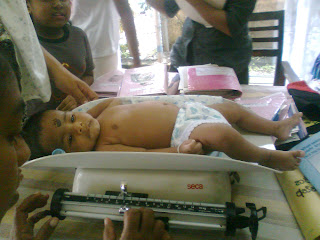CARE IS BETTER THAN
CURE-3
Nagenthiram Harivallavan
2012/08/29
3rd post
Child health clinics assess the physical, mental and social
condition of children under school age, provide vaccinations and support
parents in providing secure, child-focused rearing, care and in attending to
relationships. The clinics also promote healthy growing environments for
children and healthy family lifestyles. Support is provided by home visits by
public health midwife before & after the birth of a child and MOH of that
area.
PHM advice the mother to attend the clinic when the baby is
one month old which is the first visit to the child welfare clinic.
During the first visit following will be measured in baby,
Anthropometric
measurements
height
weight
occipito-frontal circumference
height
weight
occipito-frontal circumference
General examination
General appearance, any dysmorphic features
whether the baby is active or not
rashes in body
fontanels
skin color
eyes
mouth
assess respiratory and cardiovascular systems.
Information
found during the examination will be included in the child health development
record
(CHDR). Following information record in the CHDR subsequence visits
Anthropometric measurements
vaccinations
Development milestones
(CHDR). Following information record in the CHDR subsequence visits
Anthropometric measurements
vaccinations
Development milestones
The weighing
of the child is done in CWC upto 6 months of age. From 7 months weighing is
done in field weighing centers by the area PHM. The weighing is every month for
first 2 years of age and once in 3 months upto 5 years of age.
Immunizations programme contact according to the national Immunizations schedule. The nutritional supplementation activities of CWC are providing mega doses of vitamin A & Thiposha. Mothers are educated about the complementary feeding, child health and how to gives ‘jeewani’.
Immunizations programme contact according to the national Immunizations schedule. The nutritional supplementation activities of CWC are providing mega doses of vitamin A & Thiposha. Mothers are educated about the complementary feeding, child health and how to gives ‘jeewani’.























